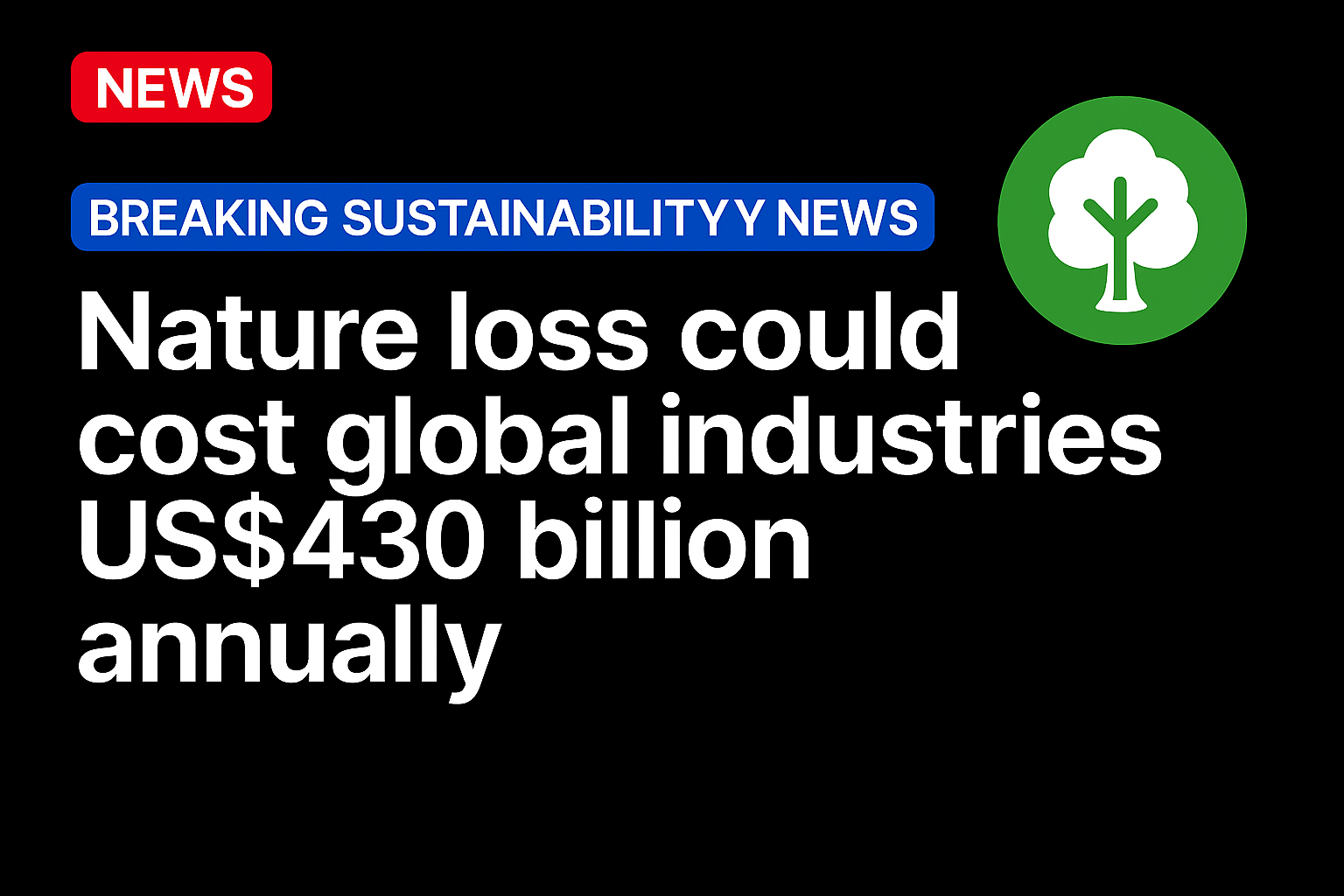Global industries could face annual losses of up to US$430 billion if action is not taken to halt biodiversity loss and ecosystem degradation, according to a new report from nonprofit organization Ceres. The analysis projects cumulative losses of US$2.15 trillion over the next five years under a business-as-usual scenario.
The report links five key drivers of nature loss: land use change, climate change, overexploitation, pollution, and invasive species. Declines in ecosystem services such as soil retention, rainfall regulation, and pollination are also reported. These losses were quantified in monetary terms to estimate the direct risks faced by industries.
Food production is identified as the most vulnerable sector, with annual losses projected at US$253 billion. Declines in pollination, soil fertility and rainfall regulation directly affect crop yields and production costs. Pollination alone underpins nearly US$25 billion in annual value but is increasingly threatened by human activity, the report noted.
Other sectors also face significant risks. Consumer goods retail could see annual losses of US$69 billion, followed by food and beverage retail and restaurants at US$54.2 billion, forestry and paper products at US$42 billion, chemicals at US$10 billion, household and personal goods at US$3.8 billion, metals and mining at US$2.7 billion, and biotechnology and pharmaceuticals at US$786 million.
“These results are conservative,” the report stated, noting that the analysis only captures direct operational risks and does not include full supply chain impacts, which could push costs higher and further affect margins, pricing and global market stability.
Ceres warned that despite the mounting financial risks, most companies remain in the early stages of developing strategies to address nature loss. This lack of action has raised concerns among investors, who seek greater transparency on corporate impacts, dependencies, and mitigation plans.
To guide companies, the report proposes a four-step framework: assess impacts and dependencies, set commitments and targets, transform value chains, and create an enabling environment for collective action. The framework is aligned with initiatives such as the Science-Based Targets Network, Nature Action 100, and TNFD’s “LEAP” approach.
The report concluded that addressing nature loss is both a financial necessity and a business opportunity. Companies investing in ecosystem restoration, regenerative agriculture, and sustainable supply chains could improve long-term stability, reputation and access to sustainable capital. It added that solutions such as carbon credits from reforestation may also open new revenue streams.
Source: https://mexicobusiness.news/




